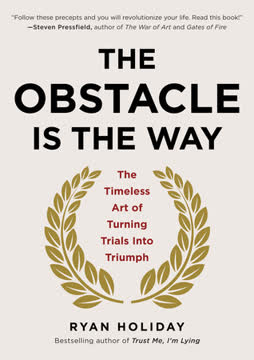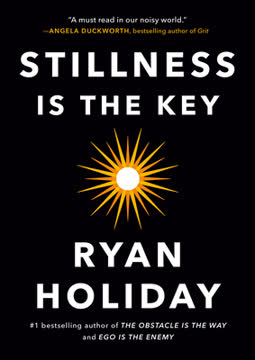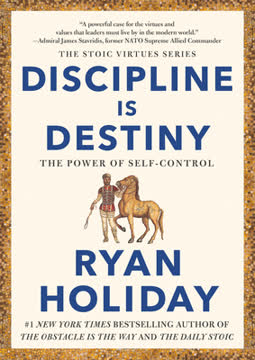Key Takeaways
1. Jesus Christ is a mythical figure, not a historical person.
It has been demonstrated repeatedly for centuries that the story of Jesus Christ was invented and did not depict a real person who was either a superhuman “son of God” or a man who was “evemeristically” built up into a superhuman fairytale by enthusiastic followers.
Core thesis. The central argument is that the figure of Jesus Christ, as presented in the Gospels, is not a historical individual but a mythological construct. This position, known as mythicism, contrasts with both the belief in a divine Jesus and the "evemerist" view that a historical man was later deified. The author contends that the Jesus story is an imaginative refashioning of ancient mythological heritage.
Lack of foundation. Unlike historical figures whose lives are corroborated by multiple independent sources, the Jesus of the Gospels lacks a verifiable historical core. Attempts to strip away the miraculous elements to find a "historical Jesus" reveal no consistent figure, leading the author to compare it to searching for a core in an onion – there's simply nothing left.
Mythical origins. The author posits that the Jesus character is a composite, drawing heavily from pre-existing mythical motifs and traditions prevalent in ancient cultures. The narrative was woven from these older patterns, rather than being a historical biography that later acquired mythical embellishments.
2. Non-biblical historical sources offer no credible evidence for Jesus.
In all this mass of Jewish and Pagan literature, aside from two forged passages in the works of a Jewish author, and two disputed passages in the works of Roman writers, there is to be found no mention of Jesus Christ.
Deafening silence. Despite the claim that Jesus was a famous miracle-worker known far and wide, no contemporary historians, philosophers, or writers from the first century mention him or the extraordinary events described in the Gospels. This includes prolific writers like Philo, who lived during Jesus's purported time and wrote extensively on Jewish philosophy and politics.
Disputed references. The few non-biblical sources often cited by apologists (Josephus, Tacitus, Suetonius, Pliny the Younger) are either:
- Widely considered later Christian interpolations (like the main Josephus passage).
- Refer to "Chrestus" or "Chrestians," terms that existed before Christianity and could refer to various figures or groups.
- Are written decades after Jesus's purported death, merely reporting what Christians believed or said, not providing independent verification.
Lack of physical evidence. There is also a complete absence of archaeological evidence for Jesus or early Christianity from the first three centuries. No artifacts, inscriptions, or architectural remains unambiguously support the existence of Jesus-centered Christianity before the 4th century, contrasting sharply with the abundant evidence for other cults and figures of the era.
3. The New Testament texts are unreliable, forged, and contradictory.
The so-called “canonical” books of the New Testament, as of the Old, are a mass of contradictions and confusions of text, to the present estimate of 150,000 and more “variant readings,” as is well known and admitted.
Foundation of fraud. The author argues that the New Testament, the sole source for the Jesus story, is built on a history of forgery and pious fraud. None of the canonical Gospels were written by their purported authors, and they did not exist in their current form until the late 2nd century or later.
Contradictions and inconsistencies. The Gospels contain numerous irreconcilable contradictions regarding Jesus's birth, life events, teachings, trial, and death. These discrepancies undermine their claim to be accurate historical accounts or eyewitness testimonies.
- Conflicting genealogies in Matthew and Luke.
- Different timelines for Jesus's ministry (one year vs. three years).
- Contradictory accounts of Jesus's family accepting or rejecting him.
- Different versions of events like the Last Supper and the resurrection appearances.
Pseudepigraphy and interpolation. Many New Testament books are acknowledged by scholars as pseudepigraphical (written under a false name). Early Christian writers themselves admitted to widespread forgery and interpolation of texts, including those they considered sacred, to suit their doctrinal or political agendas.
4. Christianity is a synthesis of older Pagan and Jewish myths and rituals.
For what is now called the Christian religion existed of old and was never absent from the beginning of the human race until Christ came in the flesh. Then true religion which already existed began to be called Christian.
Unoriginal foundation. The author asserts that Christianity is not a unique divine revelation but a rehash of pre-existing religious ideas and practices from around the ancient world. Early Christian fathers like Augustine and Eusebius even admitted that Christianity was built upon older ideologies.
Eclectic borrowing. The creators of Christianity drew from a wide array of sources, including:
- Egyptian religion (Osiris, Horus, Isis).
- Greek and Roman mythology (Dionysus, Attis, Hercules, Serapis, Apollo).
- Persian religion (Mithraism, Zoroastrianism).
- Jewish traditions (Old Testament narratives, prophecy, concepts like Messiah).
- Various mystery cults and philosophical schools (Gnosticism, Platonism, Stoicism).
Syncretic nature. The resulting religion was a syncretic blend, combining elements from diverse traditions to appeal to a broad audience across the Roman Empire. This explains the striking similarities between Christian doctrines and rituals and those of earlier Pagan cults.
5. Jesus's life story parallels numerous pre-Christian savior gods.
When we say also that the Word, who is the first-birth of God, was produced without sexual union, and that He, Jesus Christ, our Teacher, was crucified and died, and rose again, and ascended into heaven, we propound nothing different from what you believe regarding those whom you esteem sons of Jupiter.
Ubiquitous mythos. The author highlights numerous pre-Christian deities and figures whose stories share striking parallels with the life of Jesus. These similarities are too extensive and detailed to be coincidental, suggesting that the Jesus narrative is based on a common mythological template.
Shared characteristics. Many pre-Christian savior gods shared traits later attributed to Jesus, including:
- Virgin or miraculous birth (Horus, Attis, Krishna, Dionysus, Perseus, Zoroaster).
- Born on or near December 25th (Horus, Attis, Mithra, Dionysus).
- Attended by wise men or shepherds (Horus, Mithra, Krishna).
- Persecuted by a tyrant ordering infant slaughter (Krishna, Moses).
- Taught and performed miracles (Dionysus, Asclepius, Buddha, Apollonius).
- Had 12 disciples or companions (Horus, Mithra, Buddha).
- Crucified or died a sacrificial death (Attis, Dionysus, Prometheus, Inanna, Quetzalcoatl).
- Resurrected or revived after death (Osiris, Attis, Adonis, Dionysus, Mithra, Buddha).
Devil did it. Early Christian apologists, when confronted with these parallels, often resorted to the argument that the devil had created these similar myths beforehand to deceive people and undermine the true faith, a clear admission of the similarities.
6. The Bible is fundamentally an astrotheological text.
The Christian religion and Masonry have one and the same common origin: Both are derived from the worship of the Sun.
Celestial origins. The author argues that the Bible, both Old and New Testaments, is deeply rooted in astrotheology – the worship or study of celestial bodies and their influence. Biblical characters and events are often personifications or allegories of astronomical phenomena and celestial bodies.
Astrological symbolism. Numerous biblical passages contain overt or hidden astrological references:
- Genesis 1:14 stating lights in the firmament are for "signs and for seasons".
- Job 38:31-33 mentioning the "Mazzaroth" (Zodiac), Orion, and the Bear.
- The 12 tribes of Israel and 12 disciples representing the 12 signs of the Zodiac.
- The sun as the "Son of God" (Psalm 84:11, Malachi 4:2).
- The "woman clothed with the sun" (Revelation 12:1) as the constellation Virgo.
Suppressed knowledge. The Church later condemned astrology as evil, despite its own use of astrological symbolism and the fact that many early Christians and biblical figures were astrologers or associated with celestial bodies. This suppression aimed to hide the astrotheological origins of the faith.
7. Early critics and "heretics" denied Jesus's physical existence.
Those who denied the humanity of Christ were the first class of professing Christians, and not only first in order of time, but in dignity of character, in intelligence, and in moral influence.… these were the first, and (it is not dishonour to Christianity to pronounce them) the best and most rational Christians.
Docetism and Gnosticism. The author points out that from the earliest days, many who identified as Christians did not believe that Jesus Christ had come "in the flesh." These "Docetists" and Gnostics viewed Christ as a spiritual or mythical entity, not a historical person who lived and died physically.
Persistent denial. This denial of Jesus's historicity was widespread and continued for centuries, forcing later orthodox writers to repeatedly condemn it as heresy. The fact that this belief was so prevalent among early Christians suggests that the historical narrative was not the original or universally accepted understanding.
Pagan critiques. Non-Christian critics like Celsus also viewed the Gospel narratives as fiction and ridiculed Christians for their credulity. They recognized the similarities between the Jesus story and older Pagan myths, accusing Christians of plagiarism.
8. Christianity was a deliberate creation by specific brotherhoods.
The Christian Church is thus founded on a forgery of pretended words of the pretended Christ.
Pre-existing organizations. The author argues that Christianity did not spontaneously appear but emerged from pre-existing brotherhoods, secret societies, and mystery schools. These groups, like the Therapeuts, Essenes, Nazarenes, and Gnostics, already had organizational structures, rituals, and scriptures resembling those later found in Christianity.
The Therapeutae. Philo described the Therapeutae in Egypt as a monastic community with scriptures and practices similar to early Christianity, existing before Jesus's purported time. Eusebius even suggested Philo's description referred to early Christians, implying the organization predated the figure.
Zadokite influence. The Dead Sea Scrolls, particularly the Zadokite writings, reveal a Jewish/Samaritan sect expecting a "righteous" Messiah (Melchizedek redivivus) and using concepts and terms later found in Christianity, suggesting they contributed to the blueprint.
9. Rome adopted Christianity for power and suppressed dissent.
Thus was the ultimate merger and total identity of Paganism with “the new Paganism called Christianity” finally established by law and Imperial policy of “One State and One Religion,” to which conformity was enforced by laws of confiscation and death; all the other religions of the Empire were fused by fire and sword into a bastard Christianity.
Imperial agenda. The Roman Empire, particularly under Constantine, adopted and shaped Christianity to serve as a unifying state religion. This involved incorporating elements from various cults present in the empire and suppressing rival religions and dissenting Christian factions.
Suppression and destruction. To establish its dominance and hide its unoriginal origins, the Church systematically destroyed vast amounts of ancient literature, temples, and artifacts that contradicted its narrative. This included burning libraries, persecuting scholars, and making possession of "heretical" books a capital crime.
Power and wealth. The creation and enforcement of Christianity served the interests of power and wealth for the ruling elite and the emerging Church hierarchy. The doctrine of submission to authority, the emphasis on giving money to the Church, and the use of fear (hell) and hope (heaven) were tools for control and exploitation.
Last updated:
Review Summary
The Christ Conspiracy receives mixed reviews. Critics praise its comprehensive research on religious origins but question source credibility and historical accuracy. Supporters find it eye-opening, challenging traditional beliefs about Christianity's origins. Detractors argue it misrepresents sources and makes unfounded claims. Some reviewers appreciate the book's alternative perspective on religion, while others dismiss it as poorly documented and misleading. The book's controversial stance on Jesus' historicity and Christianity's pagan roots sparks debate among readers, with ratings ranging from 1 to 5 stars.
Similar Books





Download PDF
Download EPUB
.epub digital book format is ideal for reading ebooks on phones, tablets, and e-readers.




